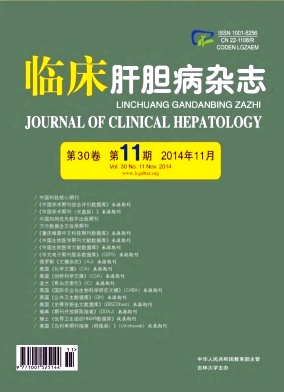Objective To investigate the effects of Jinyinlidanling (JYLDL) on gallbladder volume, rate of gallstone formation, and the expression of G protein- coupled bile acid receptor (TGR5) in guinea pigs. Methods Seventy- two female guinea pigs were randomly divided into treatment groups, normal control group, and model group, with 12 ones in each group. Guinea pigs in the treatment groups and model group were subcutaneously injected with lincomycin hydrochloride to build a cholelithiasis model, while the normal control group with the same volume of normal saline. The treatment groups were divided into four groups which were separately given aspirin and low-, medium-and high- dose JYLDL. At one hour after the last administration, the gallbladder of each guinea pig was resected to measure the gallbladder volume and calculate the rate of gallstone formation. HE staining was applied for microscopic observation, and positive cells (with expression of TGR5) were detected by immunohistochemistry. Comparison between multiple groups was made by one- way ANOVA, and comparison between two groups by LSD- t test; comparison of categorical data was made by chi- square test, and the significance level was adjusted when comparison was made between two groups; comparison of ranked data was made by Kruskal Wallis H test. Results The rate of gallstone formation in the model group was significantly higher than that in the control group (P = 0. 00) ; the rate of gallstone formation in the high- dose JYLDL group was lower than those of other groups. Typical inflammatory changes and infiltration of neutrophils were observed in the model group; the high- dose JYLDL group had the mildest inflammatory changes among treatment groups. The gallbladder volume of the model group was significantly bigger than that of the control group (P < 0. 01) , indicating that the cholelithiasis model was successfully established; the gallbladder volume of the high- dose JYLDL group was the smallest and those of the medium- dose JYLDL group and aspirin group were smaller, as compared with the model group ( P < 0. 01) . The expression of TGR5 in the gallbladder mucosa was significantly higher in the model group than in the normal control group (P = 0. 00) , while the high- dose JYLDL group had a significantly lower expression of TGR5 than the model group (P < 0. 01) . Conclusion The expression of TGR5 in the gallbladder mucosa is significantly increased in guinea pigs with cholelithiasis. JYLDL can reduce the positive rate of TGR5 expression in the gallbladder mucosa, the inflammation of the gallbladder, and the formation of gallstones among guinea pigs with cholelithiasis.













 DownLoad:
DownLoad: